Archives of criminal fiction
Criminal Fiction: the nerve-jangling opposite of the proverbial funny bone
Every month, Daneet Steffens uncovers the latest goings on in mystery, suspense, and crime fiction. See previous columns on the Criminal Fiction archive page
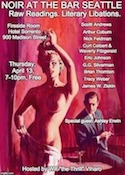
Mark your calendars: Seattle’s free, seasonal Noir at the Bar returns for its Spring edition on April 13. Come for the crime fiction readings, stay for the food, cocktails, and classic ambience!
Reading Around: new titles on the crime fiction scene
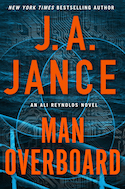
It’s all hands on deck for Ali Reynolds and her High Noon Enterprises cyber-security crew when one Roger McGreary, a childhood friend of Reynold’s colleague Stuart Ramsey, plunges to his death during a cruise. The cyber force is strong in J.A. Jance’s Man Overboard (Touchstone): less of a whodunit or whydunnit — those are relatively early revelations – the entertaining mystery speeds along, helter-skelter, as multiple forensic online investigations proceed. The killer app in this particular tale? A non-human entity rapidly developing its sentient side. Join JA Jance at multiple area events.
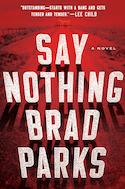
In Say Nothing by Brad Parks (Dutton), Federal Judge Scott Sampson and his wife Alison have been put on serious warning: the novel opens to the dire news that their twins, Sam and Emma, have been kidnapped. To surmise that the judge will do whatever he’s directed by the kidnappers is an understatement — but first he has to figure out which of his cases has caught someone’s criminal eye. In what is a palpably tension-wracked situation, nearly everyone around Scott and Alison falls under their frenzied suspicious — they even eyeball each other. Parks ratchets up and maintains the suspense at a relentless level, so don’t start this one at bedtime.

There are some downright bizarre shenanigans afoot in A Climate of Fear by Fred Vargas, translated from the French by Siân Reynolds (Penguin). From a demon being ruling the roost of a tiny and remote Icelandic island, to the Paris-based Association for the Study of the Writings of Maximilien Robespierre — whose members dedicate themselves to re-enacting assemblies from the heady days of the French Revolution and the Reign of Terror — Commissaire Adamsberg has his hands more than full in this police procedural. Part of the pleasure, as always, is reveling in the Adamsberg’s relationship with his crime-fighting colleagues, their eclectic foibles and respect for each other, but the superb cast of colorful non-regulars in Fear, give this latest mystery from the award-winning Vargas distinctly added heft.
Tannie Maria, blissed out by a new romantic relationship, is also suffering from terrifying flashbacks from an abusive one in The Satanic Mechanic by Sally Andrew (Ecco). The death of a land activist kicks off the other plotline in this South African-based cozy crime novel that, at times, feels like it’s been tucked into a recipe book (p.s., the recipes all sound delicious). Even though the mystery bit gets a tad lost in the descriptions of the surrounding trees, birds and wildlife, this friendly novel is something to savor nevertheless, especially in its assertion that there’s not much in life that the love of a little lamb, stalwart friendships, intimate relationships and several slices of the tantalizingly-titled Venus Cake can’t cure. And, for those who like to live a bit more on the edge, Andrew offers up the most beset-upon therapy group since Rachel Samstat’s in Nora Ephron’s Heartburn.
The Quintessential Interview: Chevy Stevens

Chevy Stevens has been writing seriously chilling thrillers since 2010’s harrowing Still Missing, and Never Let You Go, her sixth novel, is no exception, delving deep into the sometimes deadly obsessions that lurk in the most intimate of relationships. If there is a nerve-jangling counterpart of the oft-touted proverbial funny-bone, Stevens's aim, in that regard, is unswaveringly true.
Stevens who grew up in Shawnigan Lake, still lives on Vancouver Island, in the city of Nanaimo. Watch her locally: Friday March 24 with Ingrid Thoft at Folio: The Seattle Athenaeum; Saturday March 25, at the Kitsap Regional Library; or Sunday March 26, at Bellingham’s Village Books.
What or who are your top five writing inspirations?
Usually it’s my own fears or personal experiences that drive the themes of my writing.
In terms of an overall career, Stephen King has always been a strong inspiration; I connected with his work when I was very young.
My author friends and family keep me going on the tough days.
My editor is brilliant, very encouraging, and also a wife and a mother. I have learned an incredible amount from her.
When I watch something well-written on TV, or read a wonderful book, it sets off a surge of creative excitement in me.
Top five places to write?
This has changed depending on my daughter’s age and current needs. Right now, my main spot is my local coffee shop in my town, where I have become enough of a fixture that I now earn head nods from the group of older men who meet there every day for their coffee and chats.
When not at the coffee shop, I write at home in my office, which was decorated this year, or downstairs at the kitchen table, looking out at the walnut trees in our backyard.
In a pinch, I have taken my laptop out to our travel trailer, and hidden there from the dogs and family.
I’ve written in a lot of hotels over the years and my most favorite is the Hotel Valley Ho in Scottsdale. If you’re going to be writing while on tour, you might as well be looking out at sun and palm trees.
Top five favorite authors?
So hard! I admire and respect many authors, but the ones that first spring to mind are Stephen King, for the reasons I mention above. Also Ed McBain: his characters were always gritty and real. I adored the 87th Precinct novels and read them all. Bryce Courtenay’s book Power of One had an enormous impact on me. Right now I am really enjoying Sarah Turner, who wrote the Unmumsy Mum. She’s very brave in her writing, and relatable. For fantasy, I’m a big Holly Black fan. In particular, her Darkest Part of the Forest was a stand out for me.
Top five tunes to write to?
For some reason, I can only listen to music when I am writing at the coffee shop, but sometimes I will listen to a certain song before I start writing a scene, to get me in the right headspace. Ed Sheeran is lovely, and I also enjoy Passenger – the melodies are relaxing and don’t break my focus. When I want something a little grittier, I play Chris Stapleton or Eric Church. I’ve recently become interested in Lana Del Rey. Her soulful voice and themes of love fit with my current project.
Top five hometown spots?
There is a famous train trestle near the ranch where I grew up. I used to swim in the river far below, or sit on the trestle and think about life.
One of my other favorite swimming spots is farther down the river, where there used to be a provincial campground. I used it as my imaginary commune location for one of my books.
On my mom’s property there is a trail to a lookout and I used to walk there often when I was sad. There is something about heights that puts problems in perspective.
The two local corner stores still bring back lots of memories of being a kid growing up in Shawnigan Lake, going for ice-cream on a hot summer day, then hanging out at the beach with my friends. Bits and pieces of these areas have made their way into all of my books.
Criminal Fiction: Scottish Noir and books galore
Every month, Daneet Steffens uncovers the latest goings on in mystery, suspense, and crime fiction. See previous columns on the Criminal Fiction archive page
This weekend sees the inaugural Granite Noir crime fiction festival in Aberdeen, Scotland (February 24 – February 26). Heavy-hitters such as Stuart MacBride, Chris Brookmyre, Doug Johnstone and Denise Mina are just some of the featured writers participating in conversations, panels, workshops, film screenings, a special Noir at the Bar and — I particularly like the sound of this one — an afternoon discussing Agatha Christie’s favorite poisons.
Granite Noir offers a distinctly Scottish crime fiction flavor, nicely infused with touches of Nordic noir. If you’re not based in the Scotland’s Granite City, you can still follow some of the fun via Facebook and Twitter
Reading around: new titles on the crime fiction scene
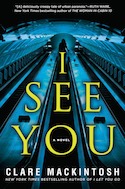
I See You by Clare Mackintosh (Berkley) whose super-chilling psychological thriller I Let You Go was one of the creepiest of last year’s creepy crop, returns with a vengeance and an on-the-pulse tale of our real-life vulnerabilities when it comes to others’ nefarious digital activities. The novel kicks off with one Zoe Walker finding her own face illustrating a classified ad for the intriguingly named “FindTheOne.com” site, and veers into the “don’t-read-this-alone-in-the-house-at-night” stratosphere from there.

River Cartwright, a British spy based in Slough House – the dead-end office where disgraced MI5 agents are relegated to their final desk jobs – is off to visit his grandfather, former spy David Cartwright, who appears to be succumbing to old-age memory loss and ramblings. Not so reassuring for other spooks. Mick Herron’s terrific intelligence agents thriller series – this one, Spook Street (Soho), is installment number four – manages to be gritty and slick at the same time, and it’s a real pleasure to watch the super-smart if damaged Slough House agents rising to the occasion once again.
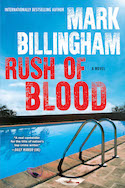
In Mark Billingham’s Rush of Blood (Atlantic), three British couples meet semi-cute on a Florida vacation, a vacay that’s marred on the last day when a young girl, unrelated to them, disappears. Back home, the six Brits stay in touch, meeting up for drinks and dinners while cops pursue the Florida mystery as well as a similar one in England. As he did in his previous standalone, 2016’s Die of Shame, Billingham does a tantalizing job of centering the smoothly paced tension around a small group of characters; and, as he did in Die of Shame, Billingham regular DI Tom Thorne makes a tiny but tenacious cameo.
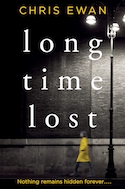
If you like your thrillers to encompass a relentless chase across Europe, then Chris Ewan’s Long Time Lost (Minotaur) is for you. Nick Miller provides a very particular kind of service, relocating people in trouble with baddies to safer spaces with new identities. But with the addition of his latest client going to ground to hide from a very dangerous man, Miller’s entire network is suddenly under threat – especially as more than one element isn’t quite what they seem to be at first glance.
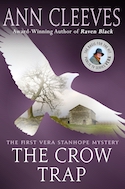
Ann Cleeves’s The Crow Trap (Minotaur) marks DI Vera Stanhope’s first appearance, back when the novel was meant to be a standalone mystery rather than the start of a series that’s going gangbusters 30 years later –not to mention being the basis of a current hit TV series. Three women gather in a small cottage in rural Northumberland to conduct an environmental survey, but it’s the pileup of dead humans that soon becomes their focus. The suspenseful story is beautifully paced and a welcome affirmation of precisely why – and how invasively – Stanhope got under Cleeves’s skin.
The Quintessential Interview: Kathleen Kent
Kathleen Kent, a bestselling historical novelist, turns her trusty pen to contemporary crime fiction in The Dime, a rollicking police procedural set in Dallas, Texas. Brooklyn transplant Betty Rhyzyk, refreshingly engaging and a committed detective with the canny voice of her tough-cop uncle a comforting – and life-saving –presence in her head, finds herself colliding with plastic-surgeried women, Mexican drug runners, Confederate re-enactors, religious fundamentalists, and, in a terrifically entertaining scene, an errant armadillo.
What or who are your top five writing inspirations?
Often, my inspiration for writing future projects will come while doing research on a current one. I’ll come across something odd or notable and it will go into my “ideas” notebook. The top five inspirational sources for writing would be newspaper articles (past or present), traveling, reading books of every genre and every possible subject, listening to music, and talking to old people. Old people have the best stories, and are usually very eager – and grateful – to talk about their lives and experiences.
Top five places to write?
My favorite place to write is at my desk, but I also relish writing in bed, on a train, on my patio when the weather is kind, and, sometimes, at a picnic table in a deserted park.
Top five favorite writers?
This is such an incredibly hard question, because there are so many wonderful writers in so many different genres, but I’ll go back to the writers that I’ve read more than once: Cormac McCarthy (Americana/Western), James Lee Burke (Crime), John le Carré (Spy/Mystery), Erik Larson (Non-fiction) — and now I’m going to cheat here because: Harper Lee, Toni Morrison, Margaret Atwood, Annie Proulx, Alice Walker, Barbara Kingsolver and many more….
Top five tunes to write to?
Music is very inspirational to me for setting the mood and narrative voice. While I wrote my first two novels, set in 17th century New England (The Heretic’s Daughter and The Traitor’s Wife), I listened to a lot of Celtic and Ye Olde English music, played on primitive instruments. My third novel was set in 1870 Texas, so I listened to Americana folk/country music, which, interestingly, has a strong Celtic influence as well. For The Dime, I made several playlists to inspire the action. My top five songs from the playlists are Bang, Bang, Bang by Dorothy; Back in Black by Brother Strut, featuring Lorna Fothergill; Conman Coming by Monica Heldal; Glory Box by Portishead; and Bad Things by Emilie Bouchereau.
Top five hometown spots?
Deep Ellum, for its restaurants and music clubs; the Bishop Arts District, for its home-grown craft stores, art galleries and indie bookstore, The Wild Detectives; Addison, north of central Dallas, for its fantastic assortment of Asian restaurants; Klyde Warren Park, for its public green areas, and nearby Dallas Museum of Art and the Nasher Sculpture Center; Trinity Groves, for its long pedestrian bridge crossing the Trinity River, walking trails and spectacular view of the Margaret Hunt Hill Bridge.
Criminal Fiction: mailing lists and Twitter follows
Every month, Daneet Steffens uncovers the latest goings on in mystery, suspense, and crime fiction. See previous columns on the Criminal Fiction archive page
With novels due out from a wealth of wonderful writers – including Denise Mina, Meg Gardiner and Dennis Lehane — crime fiction in 2017 is already making its mark.
If you’re not already subscribed to Sarah Weinman’s The Crime Lady newsletter, well, what are you waiting for? Her first missive of the year had excellent books-to-look-forward-to choices from a canny range of fellow critics including Steph Cha, Charles Finch, Jordan Foster, Oline Cogdill as well as Weinman.
Reading around: new titles on the crime fiction scene
If anyone thought for a second that Ian Rankin’s former Edinburgh Detective Inspector John Rebus would stay retired longer than you could say, “I don’t believe it,” they’re not thinking it now. Rather Be the Devil (Little, Brown), Rebus’s 21st outing in 30 years, sees him roped in with colleagues Siobhan Clarke and Malcolm Fox once again as they investigate a younger-generation gangster with possible dubious financial ties. Also not coping too well with his retirement – and adding extra frissons here and there to Edinburgh’s seamier underbelly – is Rebus’s BF (Best Frenemy), the once-powerful gangster Big Ger Rafferty. Excellent. Join Ian Rankin at the Seattle Public Library on February 21.
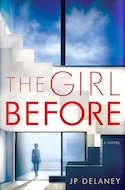
A niftily structured psychological thriller about a perfectionist architect, his dream house and two women who inhabit it at different times, JP Delaney’s The Girl Before (Ballantine) is both a page-turner and a semi-meditation on dark desires as intractable personal traps. The home, which appears to be equipped with built-in empathy as well as emotional intelligence, plays a not-so-subtle role in this double-layered creepfest.
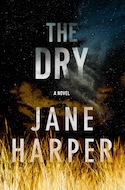
Jane Harper’s The Dry (Flatiron) opens decades ago, with Aaron Falk and his father hightailing it out of their tiny rural hometown of Kiewarra in the Australian Outback. Called back to attend the funeral of a childhood friend, Aaron returns to find Kiewarra suffering from a lengthy drought, far too much gossip and plenty of long, vengeful memories. Now a professional federal agent in the finance division, Aaron stays on to examine his friend’s accounts but finds himself quickly mired in the vagaries of a small community with a humongous set of collective baggage.
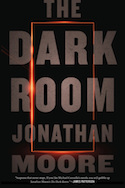
Based on the videotaped directive of a dying man, San Francisco homicide detective Gavin Cain exhumes a 30-year-old grave. The coffin’s gruesome content sets the tone of The Dark Room (Houghton Mifflin Harcourt), the second in a San Francisco-based mystery trilogy by Jonathan Moore, but it’s Cain’s thoughtful persistence that sets the pace of this tension-filled, twisty thriller. Exuding noirish elements and utilizing the city’s mean streets to their full, atmospheric effect, The Dark Room oozes dastardly deeds from blackmail to murder – and beyond.
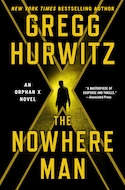
I loved last years’ Orphan X and Gregg Hurwitz’s follow-up, The Nowhere Man (Minotaur), stays true to the previously set target. As a former assassin for a covert government program, Evan Smoak puts his skills – marksmanship, nerves of steel, ability to heal his own wounds (or at least stitch them up), yadda yadda yadda – to their most challenging of tests, acting as a one-man rescue operation with the ultimate pay-it-forward system: once he helps someone, he only asks that they pass his name and number to someone else in need while he waits the next call in his fancy Fortress of Solitude. But when Smoak is captured during one of his missions, the entire game changes. Propulsive page-turner, yes, and a nail-biter to boot.
Her Every Fear by Peter Swanson (William Morrow) appears at first to be a novelistic take on the Cameron Diaz-Kate Winslet starrer The Holiday: London-based Kate Priddy does apartment swapsies with her second cousin Corbin Dell – whom she’s never met – and finds herself wowed by his fancy Beacon Hill apartment. Until, that is, a dead body turns up across the hall. And that’s just the beginning of this claustrophobic thriller. Swanson deftly weaves an intricately and beautifully tangled web, lit with nimble nods to both Alfred Hitchcock and Wendy Hiller movies.
The Quintessential Interview: Ingrid Thoft
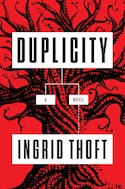
Thoft’s Boston-based PI Fina Ludlow’s life is fraught with complexities, personal as well as professional, all of which she manages in a switched-on, mouthy and head-butting way. She’s the in-house investigator for her family’s business, a firm of high-class lawyers who don’t always play by the rules; she also has to contend with her oldest brother’s non-business transgressions. In Duplicity, out this month from Putnam, Fina tangles with the Covenant Rising Church – which has suspicious similarities to a brain-washing cult – while fending for her vulnerable, partly-orphaned niece, Haley.
The Seattle-based author, who originally hails from Marblehead, Mass., calls both Beantown and the Emerald City home.
What or who are your top five writing inspirations?
I’m inspired by the news and real mysteries,particularly by the “why?” rather than the “how.” The intersections between money, power, ethics, values, and tradition inspire meto ask questions in my books that readers can contemplate through their own lens of experience. I’m inspired by fellow mystery writers who write more than one book a year! When the writing isn’t easy,I’m inspired by people who do much more demanding, difficult jobs. I’m inspired by my readers who are incredibly supportive.
Top five places to write?
At my desk with a lovely view of the water. On my couch when my back is acting up. Scrawling notes in the early morning from my bed when an idea strikes. Occasionally, on an airplane. Someday on a tropical beach with lots of snorkeling breaks!
Top five favorite writers?
Yikes! Only five?! Sue Grafton, P.D. James, Barbara Kingsolver, Jane Hamilton and Jane Smiley.
Top five tunes to write to?
I can’t write while listening to lyrics, so if I have music on, it’s classical. Favorites include Ottmar Liebert (flamenco guitar), Bach, and Mozart. When doing work-related activities that require less concentration (social media, for instance,) I listen to Beyoncé, Lady Gaga, Prince, Michael Jackson, and George Michael.
Top five hometown spots?
Seattle is where I live now, but my hometown, Marblehead, is north of Boston. In Seattle: La Fontana Siciliana, the bar at Aqua, the Olympic Sculpture Park, any of the city’s great bookstores, Molly Moon’s for salted caramel ice cream. In the Boston area: lobster rolls from Kelly’s Roast Beef; the lighthouse at Chandler Hovey Park and fried clams at the Barnacle, both in Marblehead; Boston’s Back Bay neighborhood; the Liberty Hotel, the city’s former jail repurposed into a luxury hotel.
Criminal Fiction: December's Children
Every month, Daneet Steffens uncovers the latest goings on in mystery, suspense, and crime fiction. See previous columns on the Criminal Fiction archive page
Shorter days are made brighter by clever short stories, both dark and sparkling. Nobody does a twist in the tale like O.Henry unless it’s Edith Wharton or Edgar Allan Poe. Or, try a more modern master via any of the stories in Roald Dahl’s un-fairy-tale collections for adults: Switch Bitch, Kiss Kiss, Someone Like You.
Reading around: new titles on the crime fiction scene
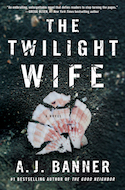
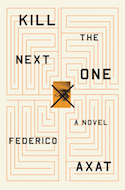
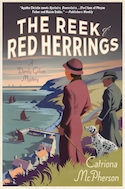
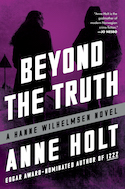
The Quintessential Interview: Jayne Ann Krentz
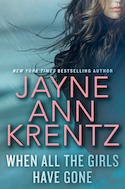
What or who are your top five writing inspirations?
Love the archetype of the modern American private investigator, Robert B. Parker’s Spenser, for example. Love the myth of the “amateur sleuth,” the character without acrime-fightingskill-set who gets caught up in a dangerous mystery – an adult Nancy Drew. Love the romantic-suspense theme of two people learning to trust each other in order to survive. Love stories that feature a hero and heroine who share certain core values: honor, determination, courage and the ability to love. Love stories of revenge. All of these things inspire me.
Top five places to write?
My office. Hawaii. My office. On board a really big ship. My office.
Top five favorite writers?
- Christina Dodd
- Susan Elizabeth Phillips
- Elizabeth Lowell
- AJohn Sandford
- Robert B. Parker
Top five tunes to write to?
Can’t write to music. Too distracting. It’s a can’t-walk-and-chew-gum-at-the-same-time thing, I guess.Top five hometown spots?
- Frank’s Quality Produce in the Pike Place Market
- DeLaurenti
- Specialty Food & Wine in the Market
- Seattle Mystery Bookshop
- Nordstrom
- Page 2 Books in Burien — yes, it’s in Burien but I think that’s close enough to be considered a hometown spot
Criminal Fiction: November thanks, and remember to add zombies or psychopaths
Every month, Daneet Steffens uncovers the latest goings on in mystery, suspense, and crime fiction. See previous columns on the Criminal Fiction archive page
Over the past couple of weeks, it’s been a real pleasure to while away several hours in the podcast-presence of Two Crime Writers and a Microphone. UK crime fiction scribes Steve Cavanagh and Luca Veste deliver silly laughs — how about those ducks? — as well as more practical pearls of wisdom, chatting about publishing news (and some non-publishing news, too), hosting book reviewers, and interviewing fellow crime fiction writers like Ian Rankin, Stuart Neville — who contributes the podcast’s twangy-groovy interstitial music — CL Taylor, Craig Robertson, Mark Billingham, and Ruth Ware. You get the feeling that this is how Cavanagh and Veste talk with each other anyway, in private: thanks for turning on the microphone, guys!
Reading around: new titles on the crime fiction scene
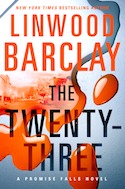

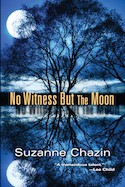

The Quintessential Interview: Justine Larbalestier
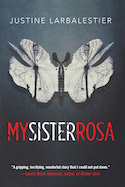
Top five writing tips?
- Always remember no writing advice works for every writer or even most writers. Some writing advice works for no one.
- Add zombies or a psychopath. This works even better than sending in a man with a gun. You can have as many or as few zombies as you like, but never have more than one psychopath: it strains credibility.
- Finish every story you start (unless it’s boring you).
- Read everything from the graffitti on toilet stalls through to the collected works of Zora Neale Hurston (but especially Hurston). Yes, bubble gum wrappers, too. (But please dispose of your bubble gum considerately.)
- Rewrite a lot.
Top five places to write?
Anywhere with an ergonomic set up. I’m broken.
Top five favorite writers?
This list changes not just daily, but probably by the minute. Here’s this minute’s top five in alphabetical order:
- Megan Abbott/Joanna Bourne (because Bourne is to romance what Abbott is to crime thus I count them as one writer)
- Isak Dinesen
- Leanne Hall
- Alaya Dawn Johnson
- Attica Locke
Top five tunes to write to?
I write in silence. Or as close to silence as I can get, which, let’s be honest, in New York City is not very silent. Very loud sirens, even louder construction noises, and the couple next door’s doomed relationship arguments are tragically in high rotation on my playlist. Noise cancelling headphones can only cancel out so much….Top five hometown spots?
I have two hometowns. (Less glamorous than it sounds. You try paying tax in two different countries with different tax years.)
In Sydney:
- My flat’s balcony
- Centennial Park
- Ester restaurant
- Royal Botanic Garden
- Australian Museum
In NYC:
- Tompkins Square Park
- East River Parkway
- Sobakoh restaurant
- Every little community garden in the East Village
- Huertas restaurant
Criminal Fiction: some October surprises
Every month, Daneet Steffens uncovers the latest goings on in mystery, suspense, and crime fiction. See previous columns on the Criminal Fiction archive page
As the nights grow longer and darker, there are many ways to sneak yourself into the seasonal mood: peruse mystery maven Janet Rudolph’s annual list of Halloween Crime Fiction; settle in with Tim Burton’s animated visual treat, The Nightmare Before Christmas; or snuggle under the duvet with Chris Ewan’s Halloween-related thriller Dark Tides.
Reading around: new titles on the crime fiction scene


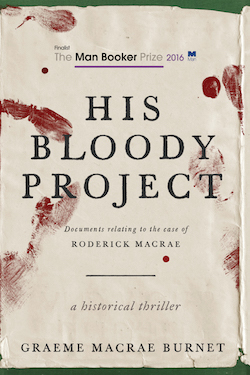
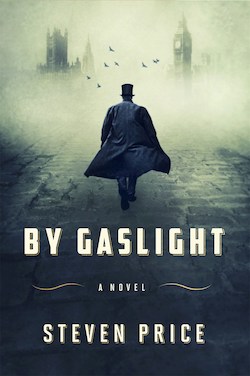
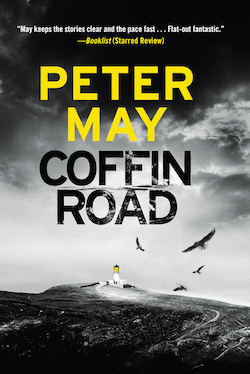
The Quintessential Interview: Elizabeth George
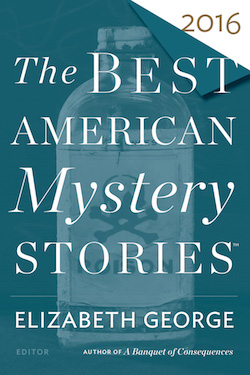
What or who are your top five writing inspirations?
I'm inspired by England's culture, history, traditions, sense of ceremony, and determination to preserve what they have. I'm also inspired by true crime and the need for justice. I'm inspired by the trajectory of John le Carré's career with regard to his growth as a writer. I'm inspired by my great affection for my characters. I'm inspired by the sense of well-being that I have when I write.
Top five places to write?
I'm lucky to be able to write just about anywhere as long as it's quiet or I have earplugs with me. I write mostly at home in my office which is above the garage here on Whidbey Island, but I also write in our condo on Capitol Hill in Seattle. Other than that, it's pretty much wherever I am. Recently I wrote while in Moscow, St. Petersburg, Riga, Osla, and Vilnius.
Top five favorite writers?
John le Carré, Tana French, John Fowles, Jane Austen, Shakespeare
Top five tunes to write to?
I write in silence unless my dog starts barking.Top five hometown spots?
On Whidbey: Mukilteo Coffee Roasters, Moonraker Books. In Seattle: Green Eileen, Book-It Repertory Theatre, Pike Place Market, driving along Lake Washington to Seward Park and walking around the peninsula with my dog. I also like the Sun Liquor Cocktail lounge on Summit. It's a real cocktail lounge for grownups with grownup drinks.
Criminal Fiction: our inaugural mystery, suspense and thriller column
New column! Every month, Daneet Steffens is going to uncover the latest goings on in mystery, suspense, and crime fiction. Welcome Daneet!
I’m delighted to be kicking off this column for the Seattle Review of Books during a month full of crime-fiction action. Bloody Scotland, Scotland’s International Crime Writing Festival, toasted its fourth year, crowning Christopher Brookmyre with the top McIlvanney Prize, and featuring the traditional England crime writers vs. Scottish crime writers football match (England won, 7-1). Stateside, Bouchercon took over New Orleans, a city made for murder mysteries, police procedurals, and vampiric thrillers: Seattle native Glen Erik Hamilton picked up the Best First Novel, and Mark Billingham, Doug Johnstone, Stuart Neville, and Bill Loehfelm rocked out at the New Orleans House of Blues. And, back in the UK, the third Noirwich weekend in Norwich welcomed a rich range of crime writers including Ian Rankin, Denise Mina, Eva Dolan, Sarah Hilary, Peter James, and Dreda Say Mitchell.
Reading around: new titles on the crime fiction scene
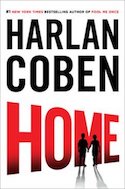

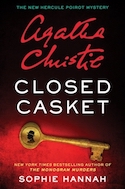


The Quintessential Interview: Chris Holm
In 2015, Chris Holm’s The Killing Kind — which just won the Anthony Award for Best Novel at Bouchercon — introduced Michael Hendricks, a hit man who targets other hit men. Its follow-up, Red Right Hand, finds Hendricks on a bit of a revenge trip when FBI Special Agent Charlie Thompson taps him for assistance: a viral video of a terrorist attack in San Francisco reveals that an FBI witness whom everyone thought was dead is, in fact, very much alive. Red Right Hand is perfectly paced page-turner: Holm elegantly juggles multiple characters, perspectives and locations, without a single misstep.What or who are your top five writing inspirations?
I have a deep and abiding love of classic pulp. I’m fascinated by what drives good people to do bad things. By how bad one can be without becoming irredeemable. By the slipperiness of identity and what we consider to be our essential selves. And I should give a nod to my adopted hometown of Portland, Maine, since I never seriously considered pursuing a writing career until I moved here—and I worry the words will dry up if I ever leave.
Top five places to write?
The left side of my couch. The University of New England’s Westbrook College Campus library. Coffee By Design on Diamond Street. The right side of my couch. On the backs of receipts at stop lights in my car.
Top five favorite writers?
I’m only allowed five?! I just broke out in a cold sweat. Today, let’s say Megan Abbott, Raymond Chandler, Tim Powers, Donna Tartt, and Donald Westlake. Tomorrow, I might cough up a whole new list.
Top five tunes to write to?
My favorites include Benny Goodman Orchestra’s “Sing Sing Sing (With a Swing),” Budos Band’s “The Sticks,” DJ Shadow’s “Organ Donor,” Mono’s “Ashes in the Snow,” and Rodrigo y Gabriela’s “Diablo Rojo.” I have a tough time writing to anything that features words, so all my picks are instrumental. I use them sparingly, whenever I feel as if my writing needs a boost.Top five hometown spots?
The secret garden behind Henry Wadsworth Longfellow’s house on Congress Street. The tasting room at Allagash. The gloomy labyrinth that is Portland Architectural Salvage. Fort Williams Park in Cape Elizabeth. And Halcyon Tattoo in Windham.